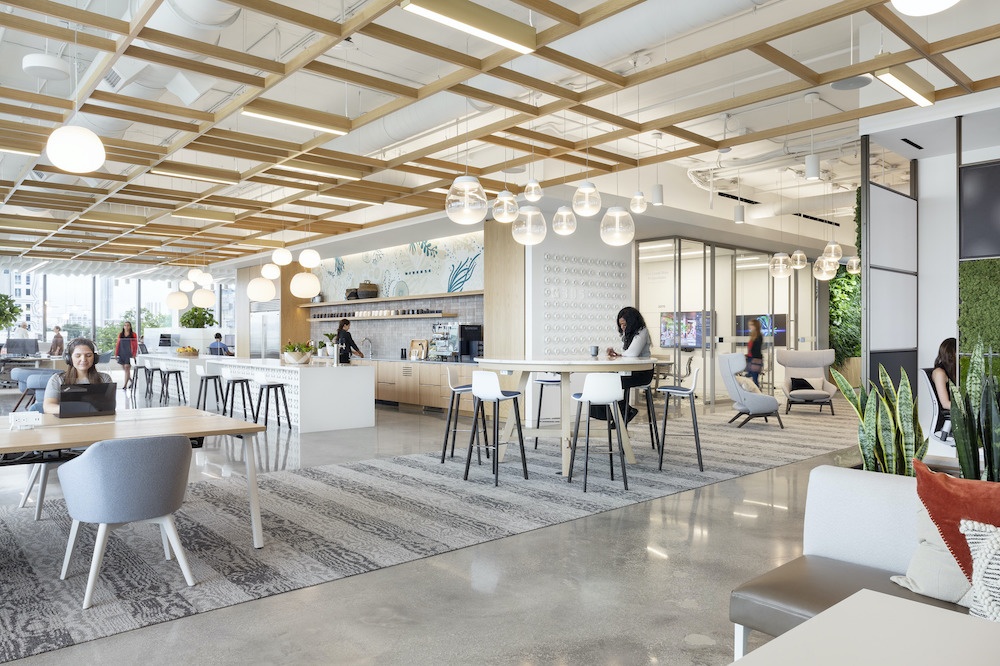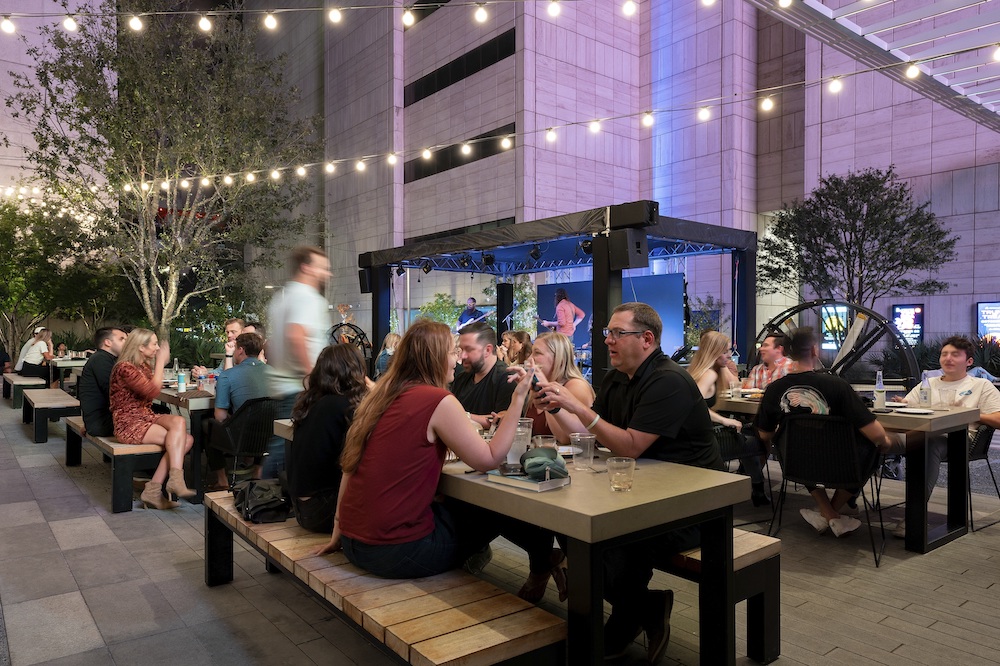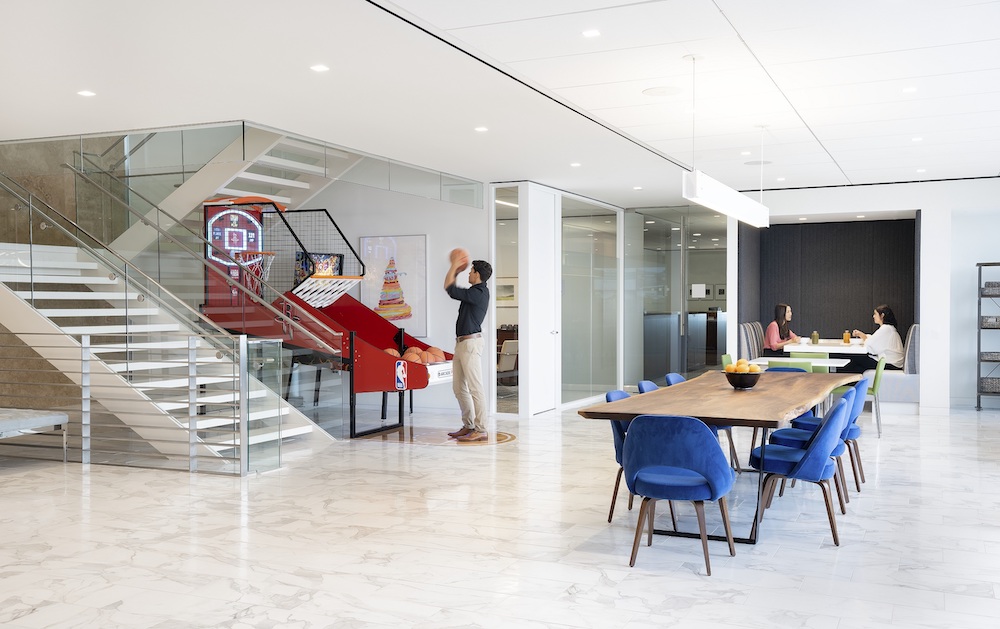Gensler’s Kelly Moore shares strategies that will engage, excite and empower employees as they return to the workplace.

Over two years ago the office workplace was turned off in one, single motion, much like a light switch. The return, however, is not as easy as flipping that switch back on in one, single motion. Rather, we should view the return to the office as a series of dimmer switches or dials based on the ability to understand expectations, learn from our teams, and ultimately revive the workplace experience. The expectation of the workplace experience has shifted. Below are strategies that are working to engage, excite and empower employees as they return to the workplace.
Understanding Workstyles Are Not Tethered to Roles Lead to New Space Types
Everyone works differently. This realization is leading the evolution of the workplace landscape, designing with the lens of recognizing how people approach work, and ultimately providing new space types to create an effective experience. The diversity, access, and variety of these space types, layered in with new technologies, empower employees – and signals to them – that the organization supports and values them.
The diversity of spaces should support everything from heads down work to team collaborative space. Spaces should be flexible, encouraging teams to meet and collaborate in ways that are best for the team. The new workplace should integrate wellbeing and accessibility attributes and be created to support the purpose of why people are coming into the office.

Learning Through Pilots and Experiments Results in Positive Outcomes
Organizations are seizing the idea of identifying how to adapt the workplace experience through the result of experimenting, learning, and iterating through pilot projects. Pilot projects can save money, avoid undue stress, and provide insights and lessons on what should be implemented to reach organizational goals.
On a small scale these pilots and experiments provide the chance to measure workplace effectiveness, inform new design, and identify strategies to be rolled out on a larger scale. Leaders are wanting to learn about their people, their experiences and ultimately create a space that responds to them. The ability to engage teams and bring them along in shaping the new workplace landscape has resulted in employee excitement, buy-in, and feeling supported by the leadership.
Reviving In-Person Cultural Moments Boost Employee Engagement
It has been a challenge to replicate cultural connections in a virtual world. We naturally crave connection with others and these connections can lead to increased happiness and healthiness. Successful coaching, mentoring, and onboarding is vital for the health of an organization and the office can foster these types of connections. As a result, leaders are creating space for moments that matter when we are in-person, these moments are designed to be compelling and support connection and celebration.
Moments can be scalable and range from weekly occurrences of catered food in a central location, allowing for impromptu interactions among colleagues, to office wide social competitive activities, creating energy and team building. These moments of engagement are contributing to the formation of strong relationships in the workplace, which can lead to a strong, more cohesive workforce.We should also recognize there are facets in which organizations might be falling short, as they open their doors to employees returning, often discouraging, and giving employees pause and anxiousness about the return to the workplace experience.

Providing A Workplace with Purpose
Employees have adjusted their expectations, priorities, and goals. People have a new awareness of how they work best, and this cannot be switched off. They crave purpose and expect their workplaces to be designed around this purpose. In a McKinsey Organizational Purpose Survey, 82% of respondents reported that it is important for their company to have a purpose. This principle has shifted beyond values and mission statements, employees are expecting it to manifest into re-imagined workplaces.
Creating Space to Support Focus Work
Focus work will continue to happen in the office. There has been so much discussion around developing spaces for teams to come together to meet, socialize and learn. We must continue to have a lens towards the individual, providing adequate space not only for teams, but also the individual. In our research, we see that top-performing companies think differently about returning to the office. These organizations identify the office as ideal for ideation and creativity, but also as the best place for many individual activities.

Recognizing Density as A Vibe
The office experience can fall short for organizations embracing flexibility and empowering employees with autonomy of where to work based on their activities. If the office is not full five days a week, on non-peak days individuals may be spread throughout the office, ultimately diluting the energy and experience for those in the office. Organizations should consider choreographing density, identifying what areas of the office are available on non-peak days to ensure that the office has a buzz and creates a positive experience for those in attendance.
The expectation around a human-centered experience is here to stay, organizations should dial into the positive shift towards focusing on employee needs. The office can serve as a vehicle in a positive workplace experience, providing occurrences and spaces that support a spectrum of activities and workstyles, from respite to focus to collaboration.

